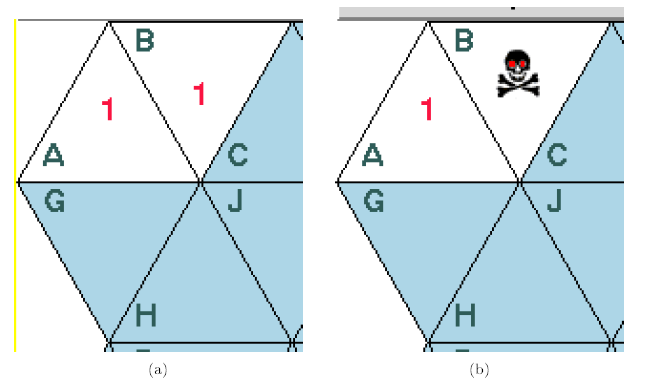Of course, there are more ways to deduce things, beyond a syllogism.
- Who decides what the valid inference rules are?
- Is it always clear when people have used the inference rules correctly?

Consider the following argument about WaterWorld boards:
|
1 |
(A) is next to exactly one pirate. |
Premise, from either subfigure |
|
2 |
(A) has only one unexplored neighbor. |
Premise, from either subfigure |
|
3 |
If you are an unexpected location next to (A), then you contain a pirate. |
Incorrect conclusion |
This conclusion is not valid; while it is correct for the first board shown (Figure 1.3 ), it is incorrect for the second (Figure 1.3). (I make this mistake all the time when playing WaterWorld too quickly, arrgghl The Author.)
The problem is that the author of the argument presumably meant to conclude "all explored neighbors of (A) contain a pirate".
Before we can study exact proofs, we need a way of writing exactly what we mean. This will occupy us for the next section.
- 瀏覽次數:2335






